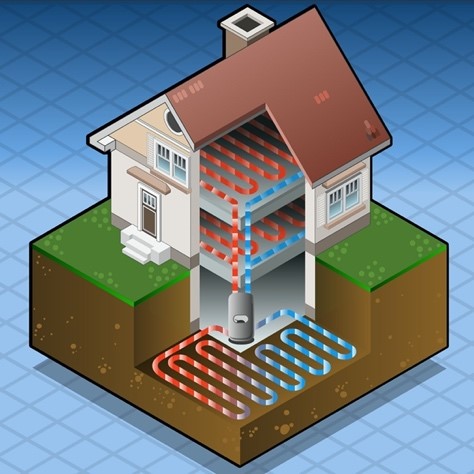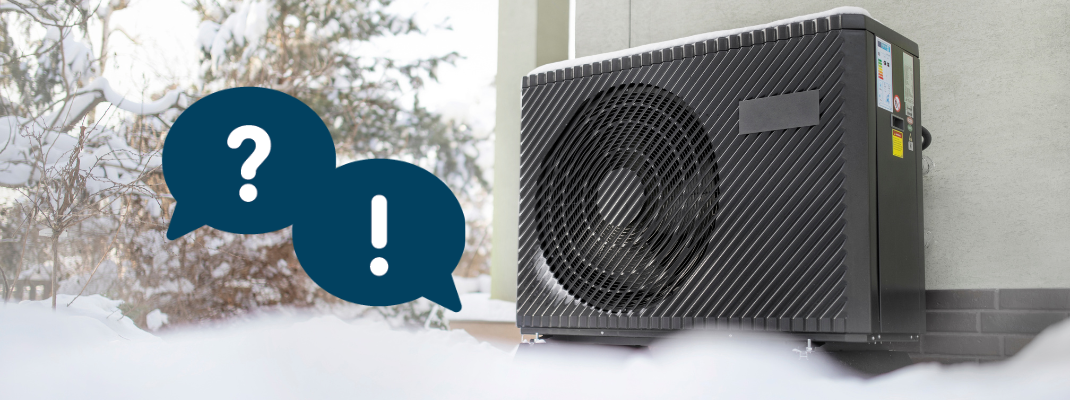Most heat pumps installed in Luxembourg are aerothermal heat pumps, which use the energy in the air.
A geothermal heat pump, on the other hand, uses energy from the ground. There are several types of geothermal heat pumps: probes (deep drilling), horizontal collectors, energy baskets or ice accumulators.
How does a heat pump work? It is an economical and environmentally friendly method of heating that extracts calories from an existing environment and releases them inside your home.
In which buildings should a heat pump be installed?
A heat pump can be installed in both new and existing buildings.
Types of heat pumps
Most heat pumps installed in Luxembourg are aerothermal heat pumps, which use the energy in the air.
A geothermal heat pump, on the other hand, uses energy from the ground. There are several types of geothermal heat pumps: probes (deep drilling), horizontal collectors, energy baskets or ice accumulators.
Discover our practical checklist on heat pumps
How a heat pump works
A heat pump is a heating system that takes energy from the environment (air, water, ground) to heat a building. The ambient heat is absorbed by the low-temperature heating system and raised to a higher useful temperature level inside the heat pump. This energy can then be used to heat the building.
The heat pump works like a fridge but in reverse: the fridge takes heat from the product to be cooled and discharges it at the back of the appliance. In the case of the heat pump, the heat is taken from the environment and transferred to the heating water.

Technical explanation of how a heat pump works
The heat pump is a system that uses the calories in the air, water or soil to return them to the heating water. This transformation is made possible by using a gas: the refrigerant.
The refrigerant (i.e. a refrigerant that evaporates even at low temperatures), which continuously changes its physical state, circulates in a closed circuit. The liquid refrigerant extracts heat from the environment and evaporates.
The then gaseous product is later compressed by means of a compressor, which brings it to the required temperature. In the so-called condenser (heat exchanger), the refrigerant becomes liquid again and transfers its heat to the heating circuit.
After condensation, there is a further cooling / liquefaction and the process starts again.
Optimising the use of your heat pump
The smaller the difference between the outdoor temperature (air, water or ground) and the desired indoor temperature, the more efficient a heat pump is. The heat pump covers the heat requirement up to a certain temperature. If the outside temperature continues to fall, an electric immersion heater or, in the case of a hybrid system, a boiler is switched on to provide the required heating capacity. However, these low temperatures are rarely reached in our latitudes.
Well-insulated building: optimised energy efficiency
For a heat pump to work as efficiently as possible, the building must also be energy efficient, i.e. well insulated. The lower the heat loss due to good insulation of the building, the lower the flow temperature of the heating can be. The flow temperature also plays an important role: the smaller the temperature difference between the heat source and the flow temperature, the more efficient the heat pump. The ideal flow temperature is 35 °C, but this is not a prerequisite. A heat pump can also work efficiently with flow temperatures of up to 55 °C.
Choosing the right radiators
The size of the radiators is another factor. The larger the radiator the better, as a large radiator can radiate more heat into the room at the same starting temperature than a small radiator. Surface heating systems, such as wall or floor heaters, are ideal, but conventional radiators are also suitable for a heat pump.



